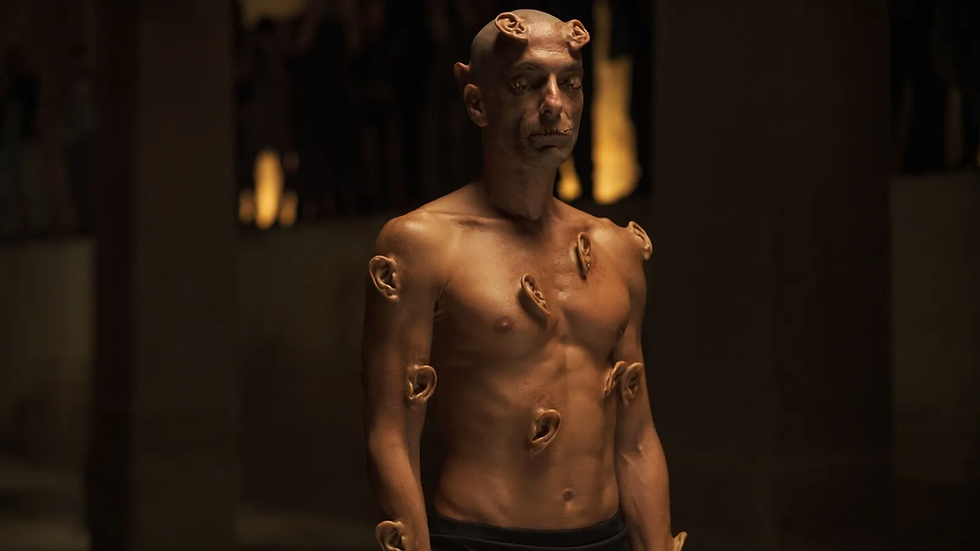Making Light of Death in 'Guillermo del Toro's Pinocchio'
- Joseph Mastel

- Jan 29, 2023
- 4 min read
There have been countless iterations of the tale of Pinocchio, so one would be forgiven for thinking nothing new or fresh could be added to the story. In 2022 alone, we saw three different movies about the eponymous puppet. The first was Pinocchio: A True Story, a Russian-produced animated film dubbed in English. Next was Robert Zemeckis’ live-action Pinocchio. Both received an overwhelmingly negative reception, and many thought they missed the point of the original story.

However, Guillermo del Toro’s Pinocchio gives viewers an engrossing tale and visual treat from start to finish and, as it so happens, is one of the best movies of 2022. Del Toro and fellow co-writers Patrick McHale and Matthew Robbins’ adaptation of Pinocchio follows the titular magical wooden boy (voiced by Gregory Mann) during the rise of fascism in Mussolini’s Italy as he struggles to fit into the real world and live up to his father’s unrealistic expectations.
As any fan of del Toro knows, he loves fairy tales. His 2018 Best Picture winner, The Shape of Water, blends fantasy and realism to tell a story of liberation, freeing individuals affected by racism, sexism and homophobia against a violent oppressor. Pan’s Labyrinth combines mythological creatures with militaristic realism as an allegory of the trauma of war and the importance of moral disobedience. The tale of Pinocchio was a natural choice for him to adapt. The level of care, attention to detail, and sheer heart that del Toro put into the movie is clear. Like all of his other movies, del Toro’s adaptation of Pinocchio deftly balances realism and fantasy to tell a rich and powerful story filled with layers of contextual thematics to deliver an anti-fascist statement and illustrate the beauty of mortality.

Del Toro sets his version of Pinocchio apart from others by its dark and grim subject matter. His adaptation of the story does contain some lighthearted moments that children can enjoy, but due to its more mature nature, it is probably not a film that children should not watch by themselves. It does not shy away from exploring themes of death, war, and grief in great detail.
At one point during the film, Pinocchio serves the regime, working for Count Volpe (Christoph Waltz). As he is trained for entertainment, Count Volpe remarks, “I am the puppeteer, and you are the puppet. I am the master, and you are the slave.” This encapsulates what it feels like to be in a totalitarian regime. The individual becomes non-existent and alienated. Uniformity is encouraged. Individuals are meant to obey and do as they are told. Going against the regime results in dire consequences, as seen when Mussolini (Tom Kenny) orders his men to shoot Pinocchio because he makes fun of the regime during one of his performances.

Pinocchio is also trained by Podesta (Ron Perlman) because he fits the criteria of what it means to be a “perfect soldier” – immortal– joining several other young children in the ranks. The oppression of Fascist regimes requires that one is no longer able to think individually, is forced to do things against their will and essentially becomes a “product of their state,” which are all things that happen to Pinocchio. These themes, combined with the bleak and gloomy stop-motion animation, in particular when Pinocchio is sent to the afterlife, make the movie incredibly creepy and sometimes even nightmarish. The surreal and somewhat off-putting nature of the black rabbits (Tim Blake Nelson) will haunt me for days.
Through his creative storytelling, Guillermo del Toro takes that darkness and turns it into light. Through his common motif of death, he demonstrates how important life is. Death, while terrifying to think about, is important because, without it, life would not be as special. If we were all immortal, life would have little meaning. Del Toro wants us to realize that we each have one life in this world and that we have to make the most of it.
The voice-acting, stop-motion animation, visuals and music are perfect. Del Toro’s team of voice actors is second to none as each performer manages to bring their character to life, with Christoph Waltz as Count Volpe and David Bradley as Geppeto being the standouts. Waltz, as always, is terrific and is in his element portraying an intimidating and cruel character, while Bradley’s performance masterfully captures the misery of losing a child.

The film’s stop-motion character designs may appear somewhat strange, but there is something very appealing in that strangeness; stop-motion animation has the capacity to blur the line between real and fictional. All the characters appear to be human-like, but their unnatural facial expressions and body movements give it a macabre edge that you wouldn’t find in a computer-animated film. It is also visually stunning and simply gorgeous to look at, with an excellent contrast of bright and vibrant animation to capture the ‘spark’ of Pinocchio against the gothic and gloomy elements. Likewise, Alexandre Desplat’s score is magnificent: “Everything is New to Me,” my personal favorite, is a wholesome song that captures the beauty of seeing and trying new things.
Del Toro does the impossible by adapting a story that has been told numerous times before and managing to make it feel original and timeless. It is unlike any other adaptation of the story due to its art style, brazen anti-fascism message and wonderful songs. It is a must-watch for anyone playing awards season catch-up, and I am confident it will be a beloved classic in the future.
Guillermo del Toro's Pinocchio is streaming on Netflix now.
-Joseph



Comments